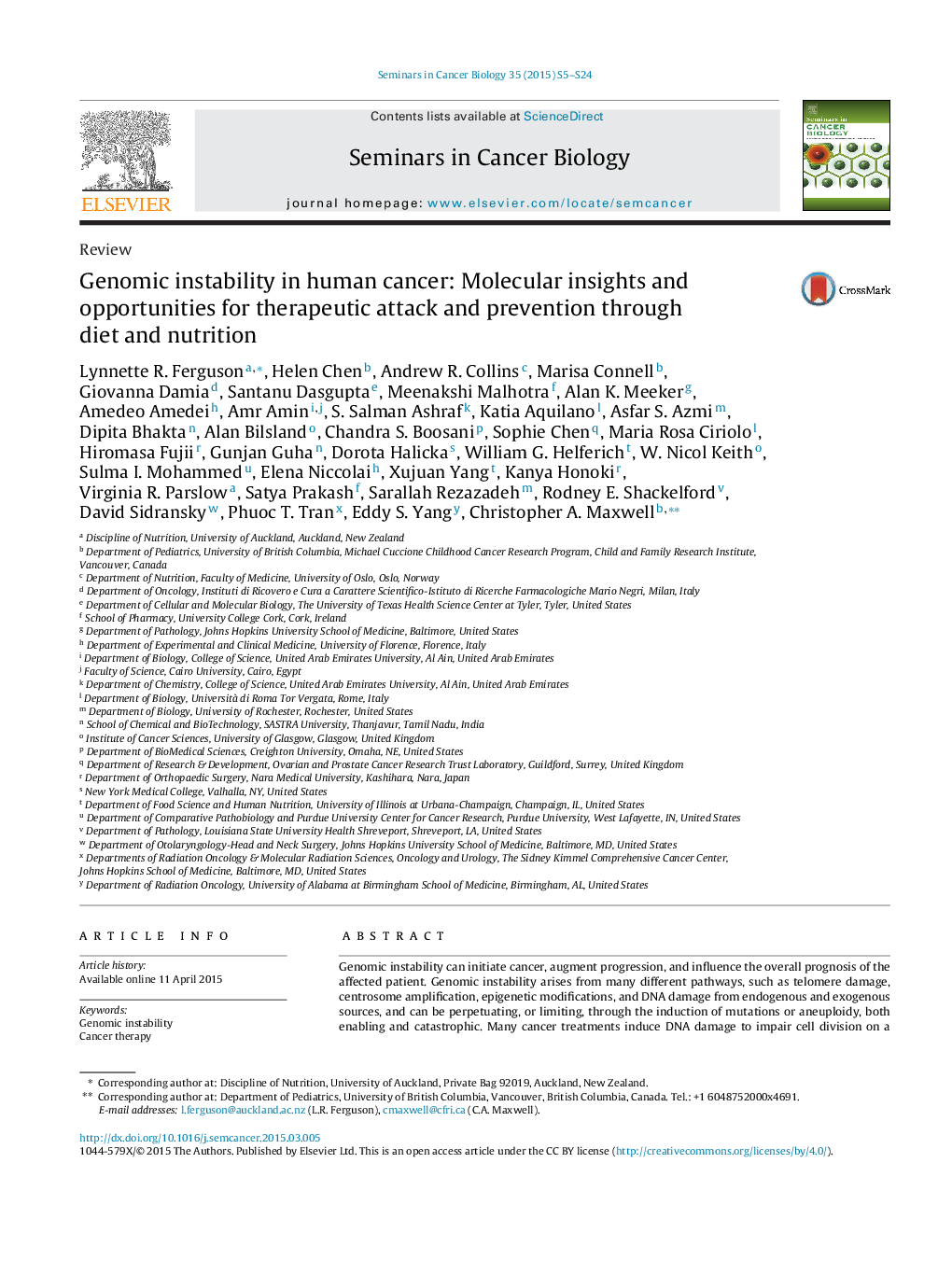| Article ID | Journal | Published Year | Pages | File Type |
|---|---|---|---|---|
| 2023661 | Seminars in Cancer Biology | 2015 | 20 Pages |
Abstract
Genomic instability can initiate cancer, augment progression, and influence the overall prognosis of the affected patient. Genomic instability arises from many different pathways, such as telomere damage, centrosome amplification, epigenetic modifications, and DNA damage from endogenous and exogenous sources, and can be perpetuating, or limiting, through the induction of mutations or aneuploidy, both enabling and catastrophic. Many cancer treatments induce DNA damage to impair cell division on a global scale but it is accepted that personalized treatments, those that are tailored to the particular patient and type of cancer, must also be developed. In this review, we detail the mechanisms from which genomic instability arises and can lead to cancer, as well as treatments and measures that prevent genomic instability or take advantage of the cellular defects caused by genomic instability. In particular, we identify and discuss five priority targets against genomic instability: (1) prevention of DNA damage; (2) enhancement of DNA repair; (3) targeting deficient DNA repair; (4) impairing centrosome clustering; and, (5) inhibition of telomerase activity. Moreover, we highlight vitamin D and B, selenium, carotenoids, PARP inhibitors, resveratrol, and isothiocyanates as priority approaches against genomic instability. The prioritized target sites and approaches were cross validated to identify potential synergistic effects on a number of important areas of cancer biology.
Related Topics
Life Sciences
Biochemistry, Genetics and Molecular Biology
Biochemistry
Authors
Lynnette R. Ferguson, Helen Chen, Andrew R. Collins, Marisa Connell, Giovanna Damia, Santanu Dasgupta, Meenakshi Malhotra, Alan K. Meeker, Amedeo Amedei, Amr Amin, S. Salman Ashraf, Katia Aquilano, Asfar S. Azmi, Dipita Bhakta, Alan Bilsland,
